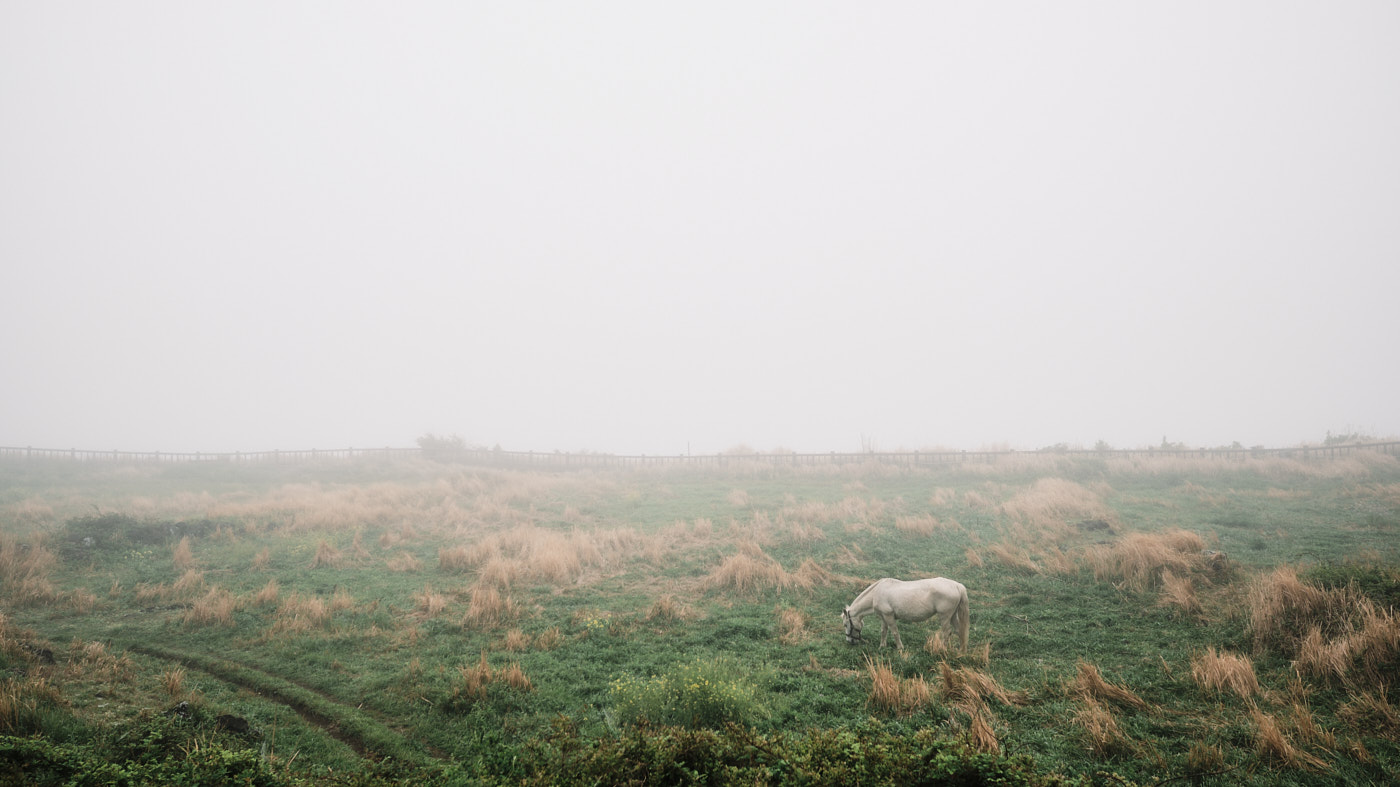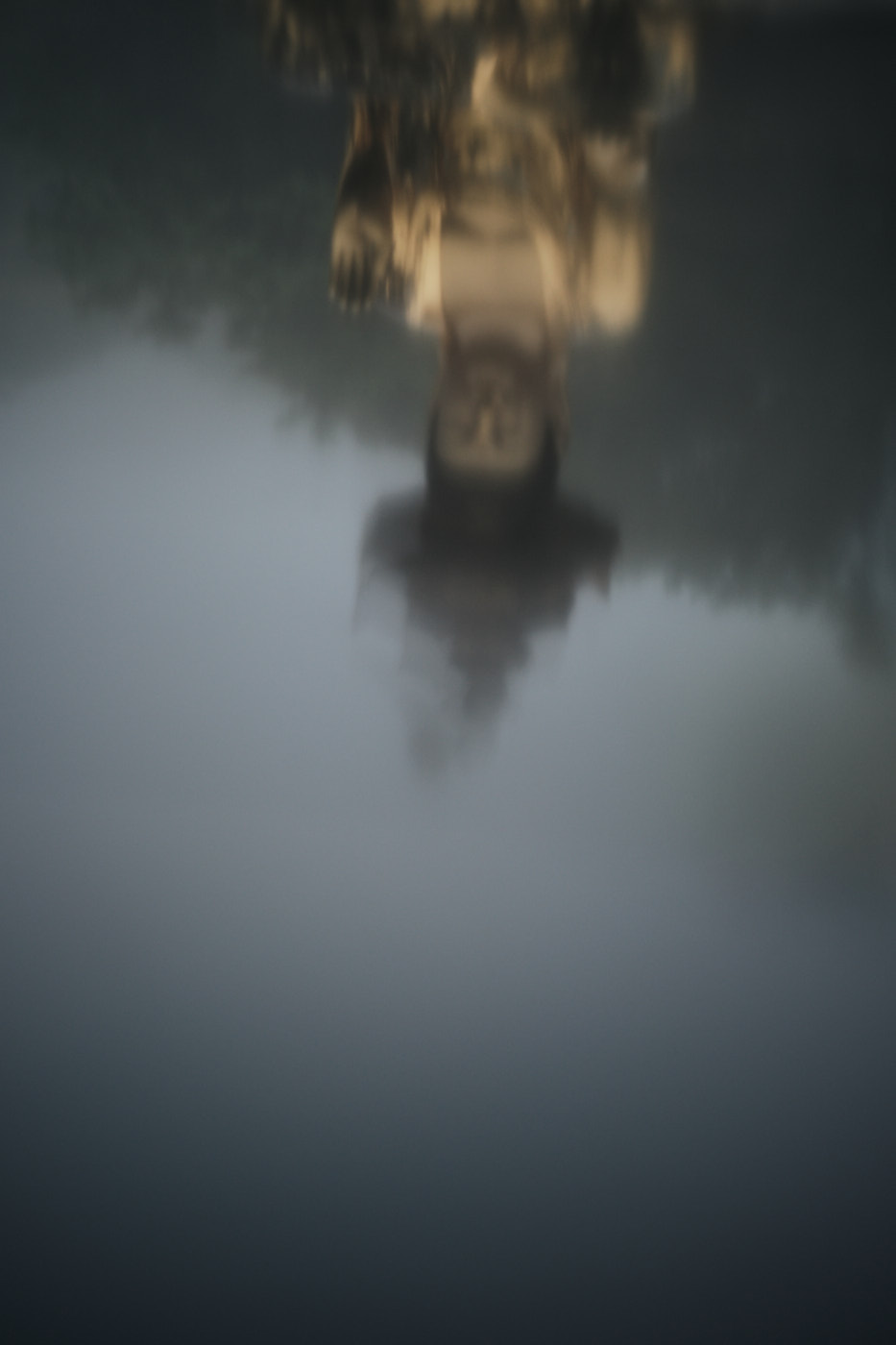The concept of good light, while a useful one to educate people about the qualities that light can have, does often get used as an excuse for not going out to make images or not being creative enough to use the light at hand. I am firmly in the camp that believes that there are images to be made in any light and any conditions, though they may not always be what you set out to capture.
There’s no such thing as good light or bad light, in my opinion, just appropriate light for what you’re trying to achieve. Sometimes, however, you set out to make a certain type of image and the conditions don’t work in your favour. You could go home or you could pivot your attention to what is possible in the conditions you have, as long as you don’t have a client brief to work to!
Recently I set out to shoot some landscape photographs with my new Viltrox 13mmF1.4 while I was down on Jeju Island. The weather report looked great and it seemed like I’d have some beautiful sunsets and sunrises for my trip. But, this being an El Nino year and the location being an island, anything can, and does, happen. What I ended up with was three days of torrential rain, fog that reduced my visibility to 20 metres or so and 70km/h gusts of wind. Not ideal for what I had in mind when I booked my flights.
After a quick bit of disappointment and a hot cup of coffee, I reset my goals and headed out to make images with an open mind rather than a preconceived agenda. I had a bag of lenses with me, a tripod and my trusty Haida M75 kit. There were still plenty of options for image-making, even in these less-than-ideal conditions.
The fog
Fog can be great for creating mood in woodland scenes or making use of when it rises off the water in autumn but this day was a real pea-souper. I could barely see 20m in front of me for most of the day. However, if you consider how fog affects the scene, there are still images to be made, even in the thickest of fog.
Fog, just like smoke and haze, has a cumulative effect on your image the deeper it gets. Essentially, it layers on top of itself from the camera’s perspective and things closer to the camera render with more contrast than things further from the camera until eventually there’s so much fog that even outlines can’t be made out.

Using a wide aperture adds a little more softness to the image. // X-T5 + XF18mmF1.4 (1/400, f/2.8, ISO 125)
With this in mind, getting close to a subject with a wide-angle lens is a great way to make use of fog. In this case, I got out my XF18mmF1.4 and got as close to the horse as I could without trespassing. This is a fine example of how fog acts on a scene. The foreground is relatively contrasty, the midground begins to render almost like a low-contrast silhouette and the background completely vanishes into the fog.
With slightly thinner fog, a longer lens can also be used to great effect. By picking a single subject to focus on and allowing the background to become obscured not only by the fog but also by shallow depth of field, a similar effect to the above can be had. Here, the XF56mmF1.2 R WR is a great tool for achieving this.

The wide aperture enhances the thinning fog in this scene. // X-T5 + XF56mmF1.2 R WR (1/320, f/1.2, ISO 250)
The rain
Rain can be used in so many ways. You can photograph it beading on windows from the inside of a warm cafe, misting on hair or even streaking against a darker background to show the intensity of a storm. One of the things I love about rain is that it washes foliage clean and gives a natural deep contrast to the world.
On this day, I was visiting a park with my wife and the previous night’s heavy rain combined with the constant drizzle of our day out gave a deep, sodden and lonely feeling to the avenues of trees. We came across this chair, normally abuzz with social media fanatics or wedding photographers. But, on this day, it echoed everyone’s mood and really stood out to me as the perfect subject to express rain.
Again, the XF56mmF1.2 R WR is the perfect companion here. The fast aperture helps to isolate the chair but also provides a natural vignette that helps to convey the feeling of being locked into this dark and lonely space. On the bright side, I also don’t have to worry about water getting into the lens or the camera as this new lens is fully weather-sealed.
The wind
Wind can make certain types of photography difficult and others downright dangerous. Earlier in the day, I had been working with a client whose long hair was being whipped this way and that with the roaring winds. However, when we were done, I visited the coast and took advantage of the large swells helped along by that very same wind.
The rough ocean was crashing over the volcanic rocks and the rate of a swell every five to ten seconds. What this meant was that I’d have enough time to duck around the back of the rocks behind me if I needed. I was on a rock shelf a couple of metres above where the swells were crashing at this time but I was still keeping a good eye on their intensity regardless.
The other thing that this frequency gave me was the ability to shoot as the water receded off the rocks. As it crashed over them, the whitewash all but covered them up, which meant I could barely see any texture in the water at all. However, waiting for the water to flow back off the rocks revealed their texture and created tendrils of water flowing back into the ocean. I finally had an opportunity to use my Viltrox 13mmF1.4! The wide field of view really helped to exaggerate the foreground in this image.

Textures created by receding water. // X-T5 + Viltrox 13mmF1.4 (2″, f/11, ISO 125)
Rather than deciding I didn’t have ‘good light’ or ‘ideal conditions’ and simply giving up and going home, reorienting my goals from a prescriptive view of the world to a descriptive one allowed me to come home with some images I never would have made otherwise. While these are not portfolio pieces that will be hanging on my wall any time soon, they all allowed me to record the world in front of me in my chosen way and exercise my creativity.
Have you ever been in a situation where the weather got you down and you didn’t want to create? How did you get out of it? Do you only ever shoot when the conditions are favourable for the images you like to make, or do you ‘roll with the punches’ as it were and make images regardless?





















